Fish finders or sounders are modern sonar instruments designed to take the guesswork out of your fishing trips and allow you to operate with complete information regardless of the nature of your preferred body of water, fishing/vessel type, and personal approach (casual or professional).
These units put the power of numerous imaging technologies and software solutions at your fingertips and help you not only locate potential hotspots but also scan and map the floor levels of your favorite fishing grounds as well as any existing structures and underwater landmarks.
Newer models come with a lot of convenient add-ons, including GPS navigation, chartplotting functionality, compasses, and marine radars, which make them ideal for navigating new areas in low visibility conditions. In other words, modern fish finders have long surpassed their original purpose of simply locating fish and making sure your patience is rewarded with a substantial catch.
Unfortunately, there is a lot of misleading and downright wrong information on the Internet when it comes to this topic, which is a huge problem since modern fish finders are basically mini-computers that DO require a certain level of technological expertise. In this exhaustive guide, you can learn how they work, what to look for in the best fish finders currently on the market, and how to differentiate between different types and functionalities.
And finally, if you’re looking for anything else you might need, do check out Bob Wards fishing supplies. They not only have a huge selection but also pretty decent prices.
To begin with, here are the top fish finders out there:
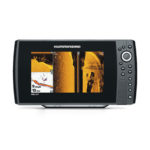 Humminbird Helix 9 Si GPS Read Review
Humminbird Helix 9 Si GPS Read Review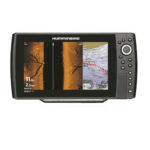 Humminbird Helix 10 CHIRP Mega Si GPS G2N Read Review
Humminbird Helix 10 CHIRP Mega Si GPS G2N Read Review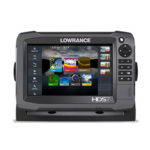 Lowrance HDS-7 Gen3 Read Review
Lowrance HDS-7 Gen3 Read Review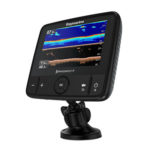 Raymarine Dragonfly 7 PRORead Review
Raymarine Dragonfly 7 PRORead Review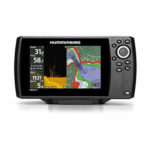 Humminbird Helix 7 CHIRP Si GPS G2 Read Review
Humminbird Helix 7 CHIRP Si GPS G2 Read Review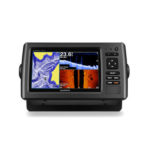 Garmin echoMAP 73svRead Review
Garmin echoMAP 73svRead Review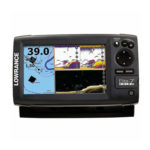 Lowrance Elite-7 CHIRPRead Review
Lowrance Elite-7 CHIRPRead Review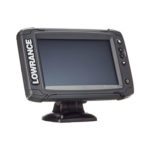 Lowrance Elite-7 TiRead Review
Lowrance Elite-7 TiRead Review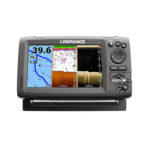 Lowrance Hook 7 Read Review
Lowrance Hook 7 Read Review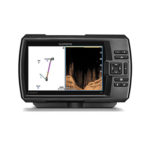 Garmin Striker 7dv Read Review
Garmin Striker 7dv Read ReviewEditor’s Picks
The fish finder market is more saturated than ever, which makes the best models that much harder to pinpoint. Having said that, here is a list of our top 10 picks for the best fish finders of 2021:
1. Humminbird Helix 9 Si GPS
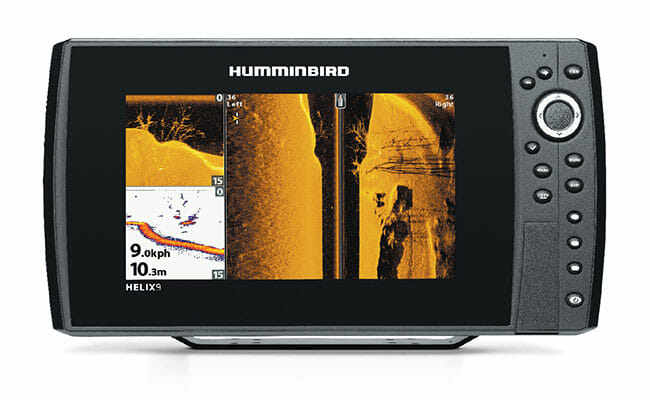
The Helix 9 Series was launched by Humminbird back in 2015 after the company discontinued the 900 Series.
The device features a 9” screen with a pixel matrix of 800 x 480, 65k color palette, and 16:9 ratio. It features an LED backlight for low visibility conditions and comes with a waterproof rating of IP-X7. The unit does not feature a touchscreen and can only be operated via the implemented keyboard. However, it does come with a split-screen feature.
Helix 9 Si GPS features the XNT 9 Si 180 T transducer with a temperature sensor and 2D, Si, and Di imaging capabilities. The maximum reach of the device is 1,500ft for 2D, 150ft for Di, and 240ft on each side for Si. These stats make the unit an excellent choice for inland freshwater fishing. Additional sonar features include SwitchFire, sonar recording, Fish ID+, Split Zoom, BottomLock, and Real Time Sonar (A-Scope).
Humminbird Helix 9 Si GPS features a precision GPS/WAAS with an accuracy of 2.52m. It stores up to 2,750 waypoints, 45 routes, and 50 trails. It also comes with the AutoChart Live function. The unit has a microSD card slot as well as NMEA 0183 and 2000 ports.
2. Helix 10 CHIRP Mega Si GPS G2N
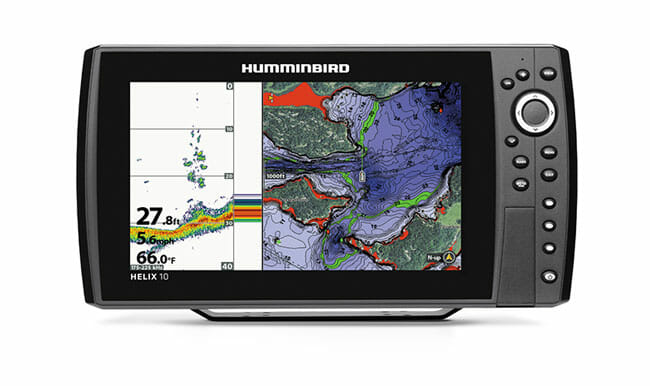
Humminbird’s Helix 10 CHIRP Mega Si GPS G2N is a budget-friendlier version of the Solix 10 CHIRP Mega Si GPS. It does make a few compromises in order to save you some money, but all the relevant features are pretty much the same with both models.
The 10.1” display features a 16-bit color palette and a resolution of 1024 x 600, which delivers extremely crisp contours and images. The waterproof rating is IP-X7. The screen does feature a pretty effective backlight, but the menus can only be navigated via the implemented keypad.
The unit comes with a DualBeam Plus 2D sonar paired with the XM 9 20 MSI T transducer. The transducer features a temperature sensor, transom mount, and 20ft of power cord. The max reach with the provided transducer is 1,500ft, but you can extend it to 3,500ft if you decide to purchase an upgrade. Mega Si reaches around 135ft with the side beams going up to 250ft.
Traditional sonar features include Selective Fish ID+, SwitchFire, Sonar Recording/Rewind, Real-Time Sonar, BottomLock, Circular Flasher Mode, Structure ID, Depth Alarm, and much more. The unit also supports 360 imaging, which requires a transducer upgrade as well.
Helix 10 CHIRP Mega Si GPS G2N comes with a 10 Hz GPS with WAAS, MSAS, and EGNOS capabilities. It features Humminbird Basemap charts but is compatible with many others too. At your disposal, you also have the AutoChart Live feature and the ability to record up to 2,500 waypoints, 47 routes, and 50 trails.
When it comes to networking, the device supports Bluetooth and Ethernet connections and has a dual SD card reader and NMEA 0183 port.
3. Lowrance HDS-7 Gen3
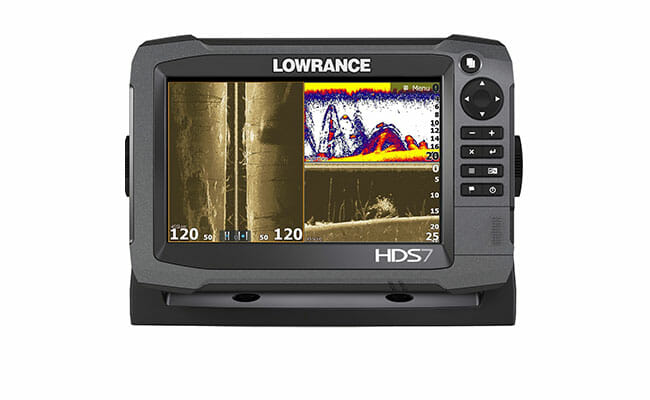
Lowrance HDS-7 Gen3 is a professional tournament-level fish finder/chartplotter designed for BASS and FLW participants.
The unit features a 7” display with a resolution of 800 x 480 in a 16:9 aspect ratio. It comes with an LED backlight and IP-X7 waterproof rating. The screen allows you to observe up to 4 different panels in the split-screen mode.
The broadband sonar utilizes the CHIRP technology and the unit itself features two transducers: 455/800 kHz LSS-2 for 3D StructureScan and 83/200 kHz. Needless to say, you will be able to perform SideScan and DownScan imaging with photo-like results. Additional sonar functions include sonar recording and TrackBack, SpotlightScan, Flasher sonar, BottomLock, Fish ID, and Split Zoom.
Lowrance HDS-7 Gen3 comes with preloaded Insight USA charts and is compatible with Navionics, Insight HD/PRO, C-MAP MAX-N+, Topo Sight, and others. The built-in GPS has a refresh rate of 10 Hz and WAAS/EGNOS corrections. The charplotting tech allows for 3,000 waypoints, 100 routes, and 100 trails.
The unit has two microSD card slots (up to 32GB), Ethernet connection, and NMEA 2000 port. It also comes with built-in wireless connectivity.
4. Raymarine Dragonfly 7 PRO
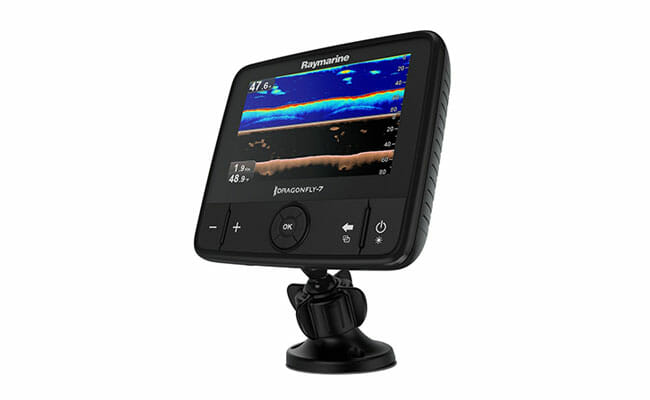
Dragonfly 7 PRO is similar to 5 PRO, but it comes with a wider display as well as wi-fi connectivity.
The device features a 7” display with an 800 x 480 resolution in a 15:9 aspect ratio. The optical bonding LCD tech allows for perfect observation in direct sunlight. The waterproof rating is IP-X6 and IP-X7 and the main menu can be viewed in 22 different languages.
The CHIRP sonar tech is used for both 2D and DownVision scans and the unit comes with the CPT-DVS transom mount transducer with an incorporated temperature sensor. The max reach is 900ft for 2D and 600ft for DownVision. Additional sonar features include A-Scope, Target Depth, several fish alarms, and much more.
Dragonfly 7 PRO is a fish finder/GPS combo with a 72-channel GPS/GLONASS module. This bundle comes with US Navionics+ charts, but the unit is also compatible with Navionics Gold, C-MAP by Jeppesen, HotMaps, LightHouse vector and raster charts, and SonarChart.
Apart from wi-fi connectivity, the unit has a microSD slot. It does not feature any NMEA ports.
5. Humminbird Helix 7 CHIRP Si GPS G2
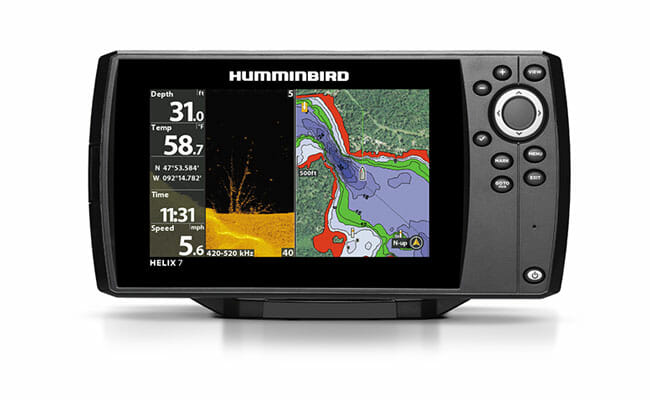
Humminbird Helix 7 CHIRP Si GPS G2 is an advanced version of the Helix 7 Si GPS unit launched in 2016. In addition to the features offered by the older model, it has the AutoChart Live feature as well as the CHIRP sonar technology.
The 7” display features a pixel matrix of 800 x 480 in 16-bit color. It also comes with an LED backlight and a waterproof rating of IP-X7. There is no touchscreen technology, but the DualBeam sonar imaging can be observed in the split-screen mode.
Helix 7 CHIRP Si GPS G2 comes with DualBeam Plus as well as Down and Side Imaging powered by CHIRP. The max reach for DualBeam Plus is 1,500ft and 240ft on each side for Side Imaging. The provided XNT 9 Si 180 T transducer comes with a plastic gimbal mount (optional in-dash mount).
When it comes to navigation, the unit comes with the AutoChart Live feature as well as preloaded UniMap charts. It has an integrated GPS receiver with WAAS, EGNOS, and MSAS with an accuracy of 2.5m. The chartplotter can store up to 2,500 waypoints, 45 routes, and 50 tracks. The GPS also measures your speed.
The device features a miscroSD card and NMEA 0183 port.
6. Garmin echoMAP 73sv
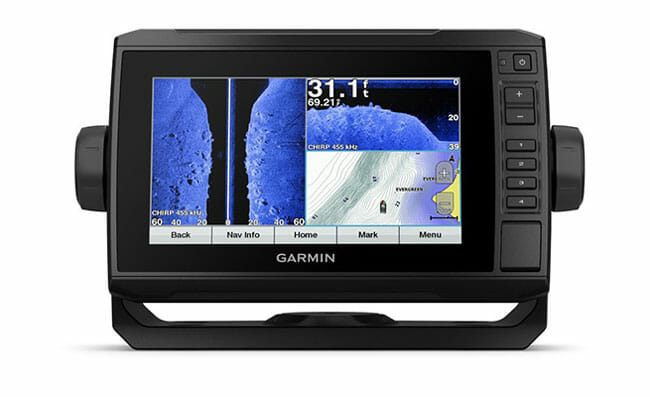
Garmin echoMAP Plus 73sv is an upgrade of the 73cv model that introduces a SideVü sonar to complement the existing ClearVü and 2D CHIRP sonars. It also features a different transducer.
The 7” WVGA color touchscreen display features a pixel matrix of 800 x 400 with an adjustable backlight, IP-X7 waterproof rating, and up to 3 apps in the split-screen mode.
The CV52HW-TM 12-pin transducer covers all the implemented sonars and can reach up to 800ft with 2D CHIRP and up to 500ft with sv/cv sonars. The unit itself is capable of reaching 2,300ft with a 50 kHz capable transducer. Additional sonar features include A-Scope, Fish Symbols, Sonar Recording and Rewind, Circular Flasher View, BottomLock, and others.
The unit comes with a 5 Hz GPS receiver and features preloaded US LakeVü charts primarily designed for inland fishing. The LakeVü HD Ultra is also available, but note that this Garmin unit is incompatible with Navionics. There is also the QuickDraw Contours feature as well as SailAssist.
Garmin echoMAP Plus 73sv features built-in wireless connectivity as well NMEA 0183 and NMEA 2000 ports.
7. Lowrance Elite-7 CHIRP
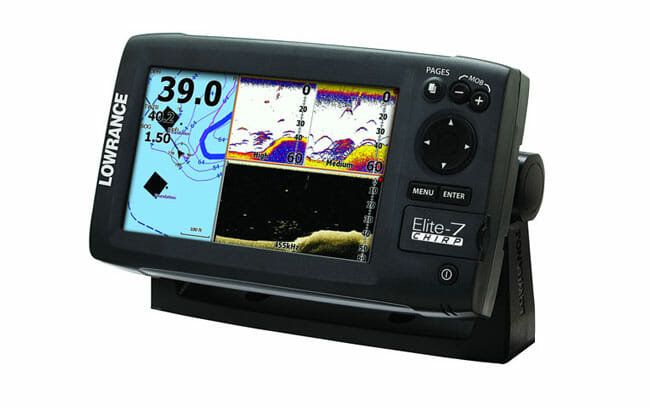
Lowrance Elite-7 CHIRP is an older unit that still holds up rather well thanks to its fish finder/GPS tech combination and generally impressive performance.
The 7” VGA SolarMax display features a pixel matrix of 800 x 480 and comes with an LED backlight. The waterproof rating is not specified. You can observe your images in split-screen.
Apart from the CHIRP sonar, the unit uses Advanced Signal Processing to reduce excess clutter and unwanted signals in general. The DownScan option can be merged with CHIRP as an overlay and observed at the same time. The provided HDI Skimmer transducer (000-10976-001) has a max reach of 1,000ft for CHIRP and 300ft for DownScan. The unit can reach up to 3,000ft with a 50 kHz capable transducer. Other features include Fish ID, Split Zoom, Flasher Mode, Sonar Recording/TrackBack, and more.
Lowrance Elite-7 CHIRP comes with an integrated GPS mechanism and preloaded Insight basemaps. It is also compatible with Fishing Hot Spots PRO, Navionics Gold, Lake Master, and others. The chartplotter can store up to 3,000 waypoints and 100 routes and trails.
The unit features a microSD slot and also allows you to use Insight Genesis to customize your maps and fishing spots.
8. Lowrance Elite-7 Ti
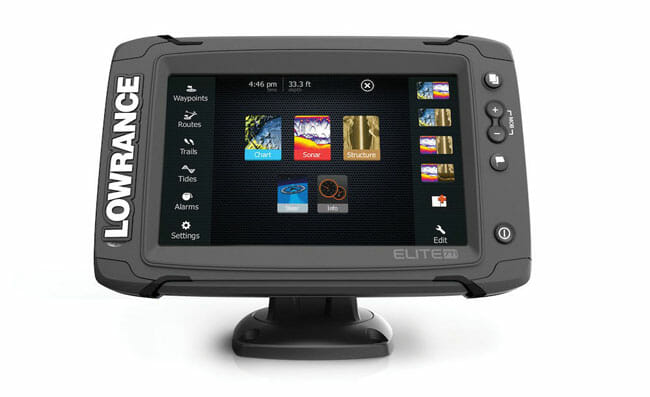
Lowrance-7 Ti is a unit launched in 2016 as an upgraded version of the CHIRP and HOOK-7 models.
Its 7” display features a pixel matrix of 800 x 480 in a 16:9 aspect ratio. It comes with a PureWhite LED backlight and IP-X7 waterproof rating.
The unit has a standard 2D sonar and StructureScan but can only use CHIRP for standard 2D. The 9-pin TotalScan transducer cannot cover the low CHIRP and has a maximum reach of 1,000ft for 2D scanning and 300ft for StructureScan. The unit can hit up to 3,000ft with an upgraded transducer. Additional sonar features include Fish ID, BottomLock, Amplitude Scope, Circular Flasher, Split Zoom, Temperature Graph, Sonar Recording/TrackBack, and several alarms.
Lowrance Elite-7 Ti comes with an integrated EGNOS/WAAS/MSAS capable GPS tech with a 10 Hz refresh rate. It features preloaded BaseMaps and the chartplotter can store up to 3,000 waypoints with 100 routes and trails. There is also the SmartSteer functionality for MotorGuide Xi5 trolling motors.
Finally, the device has a microDS slot, Wi-Fi and Bluetooth connectivity, and NMEA 2000 port.
9. Lowrance Hook 7
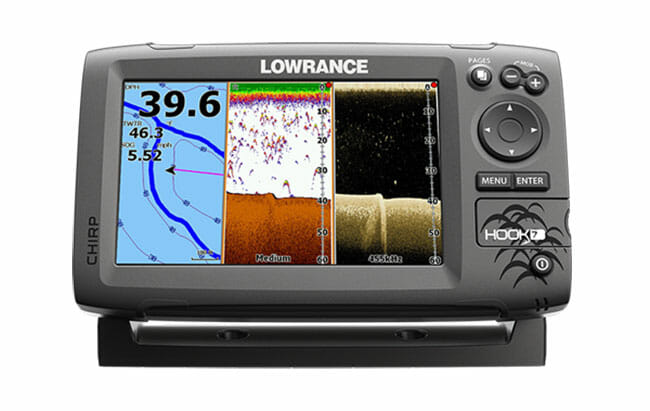
Lowrance Hook 7 is similar to the Elite-7 CHIRP model, but it is somewhat more desirable due to its lower price tag.
It features a 7” 16-bit TFT display with a resolution of 800 x 480. It also comes with an LED backlight and boasts an IP-X7 waterproof rating.
The unit comes with both regular CHIRP and DownScan, but it cannot perform SideScan imaging. There is also a provided transducer with a transom mount, temperature sensor, and 20ft of power cord. Additional sonar features include Sonar Recording and TrackBack, Advanced Signal Processing, A-Scope, BottomLock, DownScan Overlay, Fish ID, Split-Flasher, and several fish and depth alarms.
There is a built-in GPS antenna as well as preloaded BaseMap charts. The unit can also function as a chartplotter and record up to 3,000 waypoints and 100 routes and trails. Note that you can upgrade it with some of the best chart packages out there.
Lowrance Hook 7 comes with a microSD slot as well as NMEA 0183 port. It is also compatible with Insight Genesis.
10. Garmin Striker 7dv
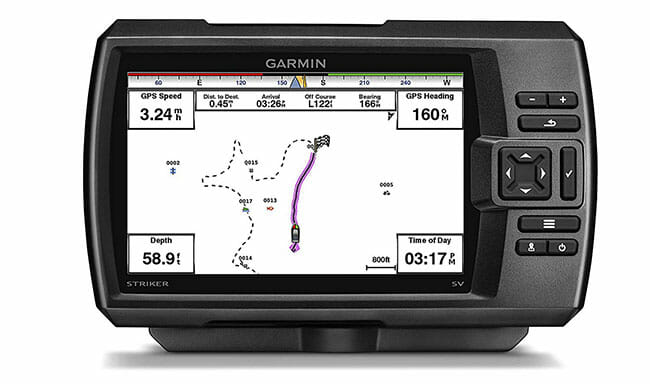
Garmin Striker 7dv was introduced in 2016 as an upgraded version of the Striker 5dv fish finder. Although quite similar, the 7dv model does feature a 2” wider display.
7dv is a pretty compact unit compared to its echoMAP counterparts and features a 7” WVGA display with a pixel matrix of 800 x 480. The waterproof rating is IP-X7 and the screen comes equipped with an adjustable backlight. You can view your images in the split-screen mode.
The CHIRP tech is present on both implemented sonars (standard 2D and DownVü), which allows the unit to reach 2,300ft in freshwater and 1,100ft in saltwater. The provided 4-pin GT20-TM transducer comes with a temperature sensor, transom mount, and 20ft of power cord. Other sonar features include Fish Symbols, A-Scope, Circular Flasher, and BottomLock.
Garmin Striker 7dv features a high-sensitivity GPS, but it does not come with any maps. It does not have a card reader or any NMEA ports but can share saved data with other Striker and echoMAP devices.
Best Fish Finder Buying Guide
Before pairing the ol’ rod and reel with a fish finder, you first have to define your individual needs and preferences. In other words, there is no such thing as the best fish finder on a universal level; what model will work best for you depends on numerous individual factors ranging from your vessel and fishing locations to your preferred type of fishing and computer literacy.
The growing popularity of these handy fishing instruments is also raising the technological bar every year, which could pose a potential problem even for experienced fishing aficionados who might have let the whole computer revolution just slide by. In order to cover all the potential instances as best as possible and allow you to identify your personal needs, we will list everything that can be considered even remotely important when looking for a top-tier sounder for your next fishing trip.
We will take a closer look at the technology behind modern fish finders and explain how they actually work. After that, we will cover all the different types and renowned manufacturers, go over the advantages of using these fishing units, and create a comprehensive list of the most important factors you want to keep in mind when looking to buy the best fish finder to match your current and future needs.
How Does A Fish Finder Work?
Fish finders are devices derived from active sonar instruments called “fathometers” that were used to determine the overall depth of any given body of water. These instruments used an echo sounding system to detect anything underneath the vessel and they gradually advanced into fish finders.
To put it simply, modern fish finders consist of the main head unit with or without a display and a transducer that can operate at a certain range of frequencies. You can view the head unit as the brains of the device and the transducer as its eyes.
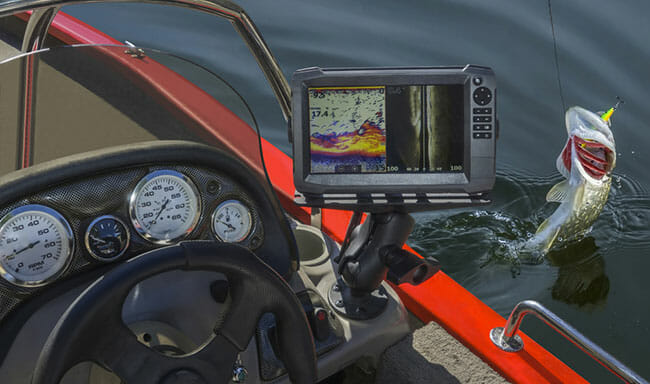
Transducers come in many shapes and sizes, but their operational method is always the same. The internal piezoelectric elements (ceramics, for example) vibrate at certain frequencies and emit sound pulses (sonar waves, sound waves…) into the water column. Once the wave hits something, each ping released by the piezo is followed by a return signal. The signal is then converted to electricity – and this is what the head unit can “understand” and process.
Needless to say, it is the transducer that does all the work by gathering all the necessary information. The head unit simply utilizes its (usually basic) computing power to process the raw data provided by the transducer and present it in a way you can understand. As we already mentioned, fish finders were designed to locate fish, but the sound waves WILL pick up underwater structures and hazards like rocks, logs, and shallow waters as well.
Types Of Fish Finders
The initial differentiation that applies to all fish finders recognizes fixed and portable units designed for medium-to-large vessels and kayaks/canoes, respectively.
Both types have their sets of advantages:
- Fixed – They pack much more sophisticated technologies, including a more reliable GPS, which helps you navigate better and increase your overall hull. They can also incorporate larger screens.
- Portable – They are much more versatile and can generally cover more types of fishing. They are lightweight and can be moved around the boat or carried to different locations. Portable fish finders are ideal if you do not own a fishing vessel and rely on rentals.
Apart from the main division, we can also group fish finders based on their implemented technologies:
- Standalone units – If you are solely interested in observing and mapping areas underneath your fishing vessels, standalone fish finders will provide you with the biggest screens and the best price-to-value ratios. These units are a perfect choice if you are a casual fisher who owns a small boat and usually visits small inland lakes. Also, if you already have a dedicated GPS unit and enough room on your dashboard, you can purchase a big-screen fish finder and make a chartplotter combo. Finally, this option is also recommended to individuals on a limited budget.
- Fish finder/chartplotter combos – These units are recommended for individuals who own mid-sized vessels and want a reliable way to find new fishing grounds and navigate their way through unknown locations. You can either observe the fish finder or the GPS individually or at the same time if your unit offers the split-screen feature.
- Networked Systems – All major companies provide their users with fully networked systems designed to cover a wide range of data sources, including vector and raster GPS charts, radars, SiriusXM satellite radio, and video. Many of them utilize Wi-Fi and/or Bluetooth and allow complete control from Android or iOS devices. In general, serious fishers have a couple of fish finders on their boats, usually one at the bow and two or more at the steering wheel. Depending on the manufacturer of choice, they are able to connect all the devices using an Ethernet-based (Humminbird) or NMEA2000 system (Garmin). This is a complicated and costly setup recommended for serious professional fishers who own medium or large fishing boats.
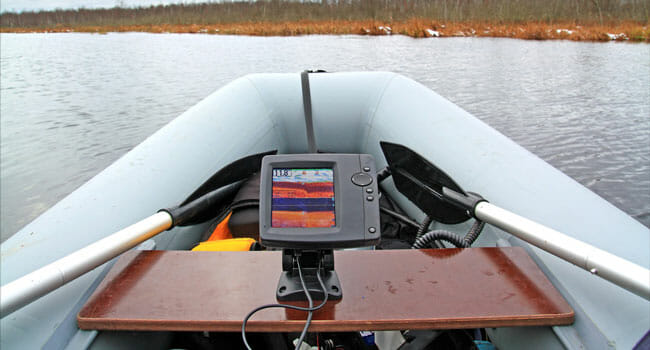
Best Fish Finder Manufacturers
As in any sphere of modern technology, there are numerous top-tier, respectable companies dedicated to producing high-quality fish finders as well as accompanying software and systems. However, these four manufacturers are currently ahead of everybody else both in terms of corporate stature and the quality of their final products:
- Humminbird – This is an American company owned by Johnson Outdoors Inc. located in Old Town, Maine. The father company, which was founded almost 50 years ago by Sam Johnson, also owns other reputable outdoors brands, including Minn Kota, Cannon, SCUBAPRO, Eureka, Jetboil, Old Town, and Ocean Kayak.
- Lowrance – Lowrance Electronics is touted as the company that launched the first consumer sonar unit back in 1957 called the Little Green Box. It was founded in 1957 in Tulsa, Oklahoma, and is currently owned by Navico, which was the biggest developer/manufacturer/distributor of recreational marine electronics in 2015. Navico was formed by the corporate merger enacted by Altor Equity Partners, the owner of Lowrance Electronics and Simrad Yachting.
- Raymarine – Raymarine Marine Electronics was formed through a leveraged buyout of one of the branches of Raytheon corporation and is an integral part of FLIR Systems. The brand has been present for more than 80 years on the market of visual navigation equipment and the company is definitely one of the current leaders in this niche.
- Garmin – Garmin Ltd. is a famous multinational technology company founded in 1989 by Min Kao and Gary Burrel in Olathe, Kansas. The company switched its headquarters to Schaffhausen, Switzerland, back in 2010. It specializes in GPS technologies for aviation, automotive, outdoor, sport, and of course, marine activities.
Benefits Of Having A Fish Finder
Adding a good fish finder to your standard fishing gear offers numerous advantages without putting an insurmountable strain on your budget. Let us go over some of the most prominent benefits you can reap from using a fish finder:
- Finding fish – As you might imagine, the primary function of these fishing instruments is to locate schools of fish. With a high-quality device on your vessel, you take the guesswork out of situations when fish is difficult to locate with your naked eye. Some models that feature noise reduction are even able to provide you with images of fast-moving prey. You will also increase your average haul per session and you can even map prominent habitats for a year-round score.
- Screening and mapping the bottom and underwater structures – Apart from allowing you to measure the overall depth of any given body of water, fish finders provide you with images of the floor level as well as any potential underwater structures. This will help you navigate certain areas better and avoid shallow waters, underwater logs, rocks, reefs, and other hidden dangers.
- Focusing on specific species – Devices with the Fish ID functionality allow you to identify the species of the fish caught in the sonar beam, which is especially useful if you want to target specific species on new fishing locations.
- Locating bait – Fish finders help you deal with species that follow bait (game fish, bass, catfish…) and let you make quick work of any waters without bait or active fish. You will also be able to observe larger bait schools and detect whether or not feeding fish are in the vicinity.
- Measuring water temperature and boat speed – GPS fish finders follow the movement of your vessel in real time and calculate its current speed. On top of that, most of the modern transducers come with temperature sensors and can provide you with up-to-date info regarding the current temperature of the water surface.
- Flexibility – Portable fish finders are ideal for screening multiple locations without wasting any time. Portable models are primarily designed for kayaks and other smaller vessels, but they can also be used to some extent for shore fishing. Some of the units also come with portable transducers.
- High-quality screens – Older fish finders featured low-quality monochrome displays that did not quite manage to show all the information technology had to offer. Modern color displays are not only larger but also come with the split-screen feature that allows you to observe 3 or 4 different readings at the same time in photo-like quality.
- Excellent for ice fishing – Ice fishing is definitely growing in popularity even though it is considerably harder than regular fishing. This type of fishing requires an extensive search, which means a good fish finder will save you a ton of time and energy while guaranteeing a more profitable haul.
What To Look For In A Fish Finder
In order to create a comprehensive and easy-to-follow fish finder purchasing guide, we will now go over their most important features:
Portability
This is a factor that will remove a lot of units out of the equation. The best fish finders for kayak fishing will not perform as well on a large fishing vessel and vice versa. This is why you need to take into account your preferred type of fishing as well as the vessel you have at your disposal. If you own a medium-to-large fishing boat, you can get one of the large-screen fixed units. However, if you are renting a vessel or prefer to fish from your kayak or canoe, you should definitely opt for a smaller and more portable unit.
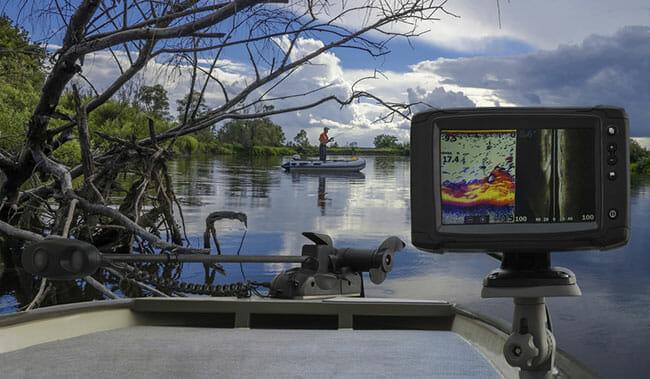
Display
There are units with greyscale displays, but we definitely do not recommend those since color screens do a much better job of depicting different depths. In other words, the overall depth definition is much better with color displays, which makes them much easier to read and therefore much more beginner-friendly.
The size of the screens goes from around 3.5” up to 16”. Larger displays allow you to observe more panels in the split-screen mode, which increases the overall amount of useful data provided by the unit at any given point. Additionally, the Split Zoom feature performs much better on larger screens. The size of the screen is also dictated by your fishing habits as well as your vessel. In other words, keeping a giant fish finder in your kayak is far from ideal.
With screen size out of the way, we also have to talk about the resolution. It happens way too often that different screens have the same pixel matrix. For example, there are series of fish finders where models with 5, 7, and 9” screens all have the same resolution, which completely defeats the purpose of having a larger screen. Higher pixel density means crisper images, especially with photo-like quality imaging options.
Waterproof Rating
Fish finders usually have an IP-X7 waterproof rating, which means they have been tested against accidental splashes as well as heavy rain. Units with this rating can even withstand complete submersion in 3.3ft of water for up to 30 minutes. Note that IP-X7 rating DOES NOT mean the device is completely waterproof, so you should avoid prolonged submersions and heavy water contact. The “X” in the rating, on the other hand, means that the unit has not been tested against outside solid objects like dust and dirt.
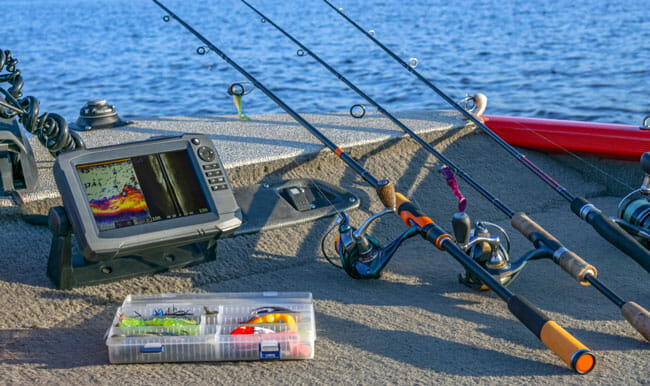
Sonar
As we already mentioned, the sonar is the brain of the fish finder and it processes the information collected by the transducer to provide you with an understandable imaging representation. Regular 2D sonars utilize a single frequency (usually 200 kHz) while CHIRP iterations operate by covering a whole range of different frequencies. In other words, CHIRP sonars are vastly superior no matter the circumstances.
It is also important to know what type of beams your sonar is capable of emitting. Wide beam cones (40°-60°) cover more ground while narrower cones (10°-20°) only scan the area right underneath your vessel. Sonars can also emit fan-shaped beams at different angles and the more advanced versions also come with Down and Side Imaging capabilities that introduce a new variable to the mix.
Transducer
The transducer effectively determines the overall reach of your fish finder. The transducers provided with different units are usually not capable of covering the so-called “low CHIRP” at 50 kHz, which significantly reduces the maximum reach, even if the main unit is capable of covering it.
Transducers can also operate on a single/dual frequency, multiple frequencies or the aforementioned broadband CHIRP system. Note that higher frequencies provide better imaging results and remove more background noise from your display. They also allow you to move faster and still record with decent quality. However, lower frequencies penetrate much deeper.
Depending on your fishing locations, you should opt for 400/800/2000 kHz for shallow waters, 200-800 kHz for depths up to 200ft, and 50 or 80 kHz for deeper waters.
Navigation
Modern fish finders also double as GPS and chartplotting devices. Apart from being able to track your location in real time and determine the speed of your vessel, GPS modules allow you to install numerous chart packages and navigate thousands of lakes, rivers, and coastal waters all over the US. Alternatively, you can also create your own maps in case your device does not come with a preloaded package.
The chartplotting function allows you to create thousands of waypoints using suggestive icons to remember important landmarks for later. You can also create your own routes and trails and share them with other fishers who might not have that particular area mapped out.
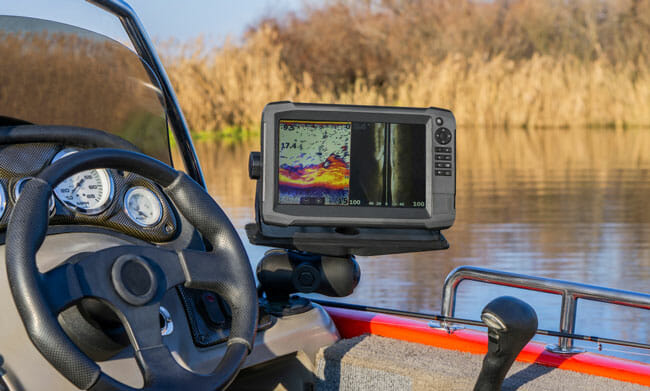
Networking
We use the term networking to denote the ability of any given fish finder to connect with other devices and emit/receive data. In order to do that, it needs to feature some common connection medium, including Ethernet, Wi-Fi or Bluetooth connectivity, micro or regular SD card reader, and NMEA 0183 or 2000 ports. The more connection options your chosen device has, the easier it will be to upgrade the software, install new maps, share your waypoints and custom maps with other devices, import data created by other fishers, and more.
Final Thoughts
As with any other product, the best fish finder for you is determined by your personal fishing preferences and a multitude of other individual factors. Before purchasing a fish finder, you have to take numerous factors into consideration, including your preferred fishing type, favorite locations, targeted species, IT literacy, the fishing vessel you are using, whether you are a casual or professional fisher, and many others.
Once you know what you are looking for, it will be much easier for you to choose the right fish finder. Hopefully, by now, you are aware what type of fish finder is best for you, so the only thing that is left is for us to invite you to read our individual reviews of those models that pique your interest and meet your requirements. Remember, modern fish finders are no longer considered luxury and will save you a ton of time and effort spent on outdated alternatives.
Enjoy your new fish finder and may your lines never stop tightening!
